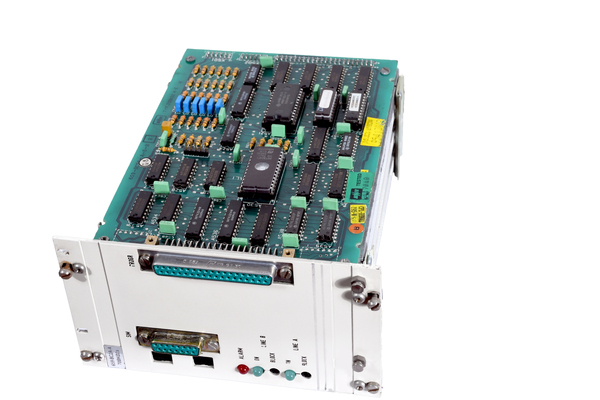Notifications
ALL BUSINESS
COMIDA
DIRECTORIES
ENTERTAINMENT
FINER THINGS
HEALTH
MARKETPLACE
MEMBER's ONLY
MONEY MATTER$
MOTIVATIONAL
NEWS & WEATHER
TECHNOLOGIA
TV NETWORKS
VIDEOS
VOTE USA 2026/2028
INVESTOR RELATIONS
COMING 2026 / 2027
ALL BUSINESS
COMIDA
DIRECTORIES
ENTERTAINMENT
FINER THINGS
HEALTH
MARKETPLACE
MEMBER's ONLY
MONEY MATTER$
MOTIVATIONAL
NEWS & WEATHER
TECHNOLOGIA
TV NETWORKS
VIDEOS
VOTE USA 2026/2028
INVESTOR RELATIONS
COMING 2026 / 2027
 Gaurav Sharma -
Jun 2 -
Other -
electronic card repair
MAXDNA Card repair
-
190 views -
0 Comments -
0 Likes -
0 Reviews
Gaurav Sharma -
Jun 2 -
Other -
electronic card repair
MAXDNA Card repair
-
190 views -
0 Comments -
0 Likes -
0 Reviews

In today’s fast-paced industrial world, automation and efficiency go hand in hand. Whether you’re running a manufacturing plant, managing complex machinery, or maintaining critical equipment, there’s one invisible force powering it all—the control system. And at the heart of these systems lies the MAXDNA card, a powerful and intelligent circuit board that ensures smooth, real-time operations.
But what happens when your MAXDNA card fails?
The answer is not always replacement. In fact, the smartest businesses in 2025 are choosing MAXDNA card repair to get back on track—fast, cost-effectively, and sustainably.
Here’s everything you need to know about how repairing your MAXDNA card can save your business time, money, and effort—without compromising on performance.
The MAXDNA (Modular Automation Xtended Distributed Network Architecture) control system, developed by ABB, is one of the most robust automation platforms used across multiple industries. Its cards control various functions like I/O operations, communication protocols, signal processing, and more.
These cards are used in:
Power generation systems
Oil and gas refineries
Process industries
Paper and pulp manufacturing
Utilities and infrastructure automation
If a MAXDNA card fails, entire processes can shut down. That's why reliable repair solutions are essential to avoid production losses and expensive system replacements.
Wondering if your card needs repair? Some early warning signs include:
Sudden loss of signal or data
Intermittent communication failures
Error messages in the control panel
Burnt or damaged components
Unexpected system reboots
Power fluctuation issues
Ignoring these signs can lead to bigger system failures. The good news is—most of these issues can be fixed with expert repair services.
Let’s face it—industrial electronics are expensive, and sourcing a brand-new MAXDNA card is not only costly but often time-consuming due to limited availability. In comparison, repair offers several benefits:
Lower Cost: Repairing a card typically costs 40–70% less than buying a new one.
Quick Turnaround: Fast diagnostics and repairs reduce your equipment downtime.
Eco-Friendly: Repairing reduces electronic waste and supports your company’s green goals.
No Reprogramming Hassles: The repaired card often retains its original settings and compatibility.
Zero System Overhaul: Keep your existing systems intact—no need to retrain staff or change configurations.
Companies like GPE India specialize in diagnosing and repairing MAXDNA cards with a high success rate. Here's what a professional repair process looks like:
Initial Assessment
The card is examined visually and tested for basic faults like burn marks, cracked components, or corroded parts.
Advanced Diagnostics
Using high-tech tools like oscilloscopes, multimeters, and signal analyzers, technicians pinpoint the root cause of the failure.
Component-Level Repair
Damaged components such as ICs, resistors, capacitors, or connectors are carefully replaced with OEM-grade parts.
Software/Firmware Handling
If needed, the firmware is reprogrammed or updated to restore proper functionality.
Testing Under Load
The repaired MAXDNA card is tested in a simulated real-time environment to ensure it's 100% functional.
Final Quality Check
After passing all tests, the card is cleaned, labeled, and packed securely for delivery.
With decades of experience in industrial automation repair, GPE India has earned a reputation for high-quality and dependable services. From legacy systems to advanced control platforms, their team handles it all with precision and speed.
Here’s what makes GPE India stand out:
Dedicated facility for repairing high-end automation cards
Expert engineers trained in handling ABB MAXDNA systems
Fast turnaround with emergency repair options
Use of high-quality, OEM-grade components
Comprehensive testing before dispatch
Nationwide pickup and delivery for added convenience
Whether you’re facing frequent shutdowns or dealing with a dead system, their engineers are equipped to bring your MAXDNA card back to life.
Here are some typical scenarios where repair makes sense:
Replacement card is obsolete or unavailable
Downtime costs are high and immediate action is needed
System recalibration or programming is time-consuming
The card has visible physical damage but is not completely dead
You're operating on a maintenance budget and need a cost-effective solution
And here comes the most important part—if you’re currently experiencing issues with your MAXDNA-based control system, investing in MAXDNA card repair could be the smartest decision you make this year. This service not only restores functionality but also gives you complete control over your operations—without burning a hole in your pocket.
The repair of MAXDNA cards isn’t just limited to industrial automation teams. It's a game-changer for:
Maintenance Engineers: Keep operations running smoothly.
Procurement Heads: Save money without compromising quality.
Plant Managers: Reduce downtime and meet KPIs.
Sustainability Officers: Minimize e-waste and environmental impact.
Whether your industry is power, process, or infrastructure—repairing these critical control components ensures smooth, uninterrupted operations.
In a world where every second of machine downtime equals lost revenue, waiting for a replacement part just isn’t smart. Repairing your MAXDNA card is a faster, more affordable, and sustainable choice.
At GPE India, you're not just getting a repaired part—you're gaining peace of mind, expert support, and a trusted partner who values uptime as much as you do.
So before you toss that faulty control card aside, give it a second chance. MAXDNA card repair isn’t just a technical fix—it’s a business advantage that puts you back in control.
